Most common sites or scenes for trips, slips and falls
As long as we are on our feet, we are at risk for hazards such as slips, trips, and falls. However, there are also situations and environments that make these hazards even more pronounced.
On the job, environmental conditions can change fast, and our risk level changes with it. Below is a list of potentially hazardous external conditions that can increase the risk of slips, trips, and falls:
- Working from heights
- Wind
- Rain
- Snow
- Low-lit areas
- Uneven surfaces
- Spills
- Debris or blocked pathways
- Elevated equipment (ladders, scissor lifts, booms)
- User error
Working under these environmental conditions means exercising caution and being vigilant of our employees who are more susceptible to tripping, slipping or falling.
For example, a lone lineman can hop in a service truck and go to a job site on a Monday at 2 pm with no wind, rain or debris. He repairs a transformer and returns home safely within a few hours. The same lineman may get called to respond to an outage on Wednesday at 2:45 am with howling winds, freezing rain, and knocked down trees. Once he arrives, he must climb wooden poles while battling the elements. Within 72 hours one serviceman could conceivably perform the same job twice but face dramatically different risk profiles each time.
We must also consider different people within an organization, their health, age, and role.
The most susceptible employees to trips, slips and falls
There are environments and occupations that encounter these risk factors more than others. Construction, mining, utilities, and anyone who works alone has increased exposure to risks such as trips, slips, or falls. To an extent, everyone in these higher-risk industries has exposure to the risk factors above, however, the job roles below are often at the greatest risk:
- Millwrights
- Electricians
- Welders
- Scaffolders
- First Responders
- Cable Technicians
- Linesmen
- Meter Readers
- Iron Workers
- Steel Fitters
- Plumbers
- Pipe Fitters
- Heavy Equipment Operators
We must also consider the age and physical health of our employees with regard to external hazards. Two Meter Readers may work in the same area and face the same environmental conditions but have completely different levels of risk. A physically fit male in his 30s may not experience fatigue on a hot day in the same way a male in his 60s with existing heart problems might. Both employees are performing the same job under the same conditions, but the risk of tripping, slipping or falling becomes increased for the fatigued employee.
Best practices, procedures and policies to mitigate trips, slips, and falls
To prevent trips, slips, and falls we must first identify the hazards as they are presented to us. Many companies implement procedures such as Job Site Analysis, Take 5, Toolbox Talks, Job Briefs, or other similar practices. The common thread among all of these is that they involve leadership and the employees having a discussion around:
- Jobs that need to be done
- Potential hazards
- Mitigation tactics
- Processes that must be followed
Aside from these best practices, you’ll also want to ensure proper footwear when it’s slippery or wet, harness and fall arrest when at heights, appropriate lighting for low-lit areas, arc-flash rated clothing for those working with electricity and other appropriate insulated clothing.
Following these practices allows teams to share an understanding of what is expected on the job, and what to do when something unexpected happens. When the unexpected happens, is when additional safety measures come in handy.
Technology requirements for workers at risk of trips, slips, and falls
Proper training and use of fall arrest equipment is needed for any employee working from heights, however, not all falls happen from heights. It’s also prudent to have a “safety net” for when the first line of defence fails. Even when all the proper precautions are taken, trips, slips, and falls can still occur. Employees getting out of a truck can fall and become unconscious or falling debris can render an employee unconscious.
A personal device that has fall detection and no motion capabilities are recommended for workers at risk of slips, trips, and falls. A device such as Blackline's G7x can be worn while working and will send an alert with its exact GPS to your 24/7 monitoring team if someone slips or trips and remains motionless. The device uses a gyrometer that can detect a fall the moment it happens.
The G7x is a satellite device that also detects up to 4 different gases. The G7x also has a panic latch for employees in distress. A troubleman who falls from a pole and breaks their leg may still be conscious and choose to pull the panic latch to let their monitoring team know they need immediate assistance.
device uses a gyrometer that can detect a fall the moment it happens.
The G7x is a satellite device that also detects up to 4 different gases. The G7x also has a panic latch for employees in distress. A troubleman who falls from a pole and breaks their leg may still be conscious and choose to pull the panic latch to let their monitoring team know they need immediate assistance.
Minimum requirements for a lone worker procedure
A good lone worker procedure has four minimum requirements.
- Hazard assessment: Conduct a hazard assessment and take measures to eliminate the hazard or minimize the risk. Hazard assessments are often done during a job brief, job site analysis, or toolbox talks. Telelink promotes a five-step risk assessment for lone workers, which you can access here.
- 24/7 Check-in: Establish a check-in procedure to ensure 24/7 contact is kept with all employees and a designated monitoring team is available. The execution of your escalation procedure often comes down to the preparation and professionalism of the monitoring team. Understand the differences between virtual monitoring solutions, automated response check-ins and live monitoring by a dedicated team.
- Two-way communication: Provide employees with two-way communication. If cellular phones are unreliable in remote areas, be sure to have alternate methods available such as satellite devices. Low-tech solutions such as text or call to check-in also work well as long as the employee has access to a landline or mobile phone.
- Location: It is important to know the exact location of lone workers in as close to real-time as possible. Whenever appropriate, use security measures such as surveillance cameras, rounded mirrors, and GPS technology.
3rd party monitoring for lone workers
There are a few options for monitoring your lone workers. If you only have 1-2 lone workers and they work regular business hours, an internal monitoring solution like having a supervisor monitor may suffice. However, best practice, and for any organization with dozens of lone workers, you will want to partner with a 3rd party monitoring team.
At a 3rd party monitoring centre, there are trained safety monitoring experts whose sole responsibility is to monitor, action alerts consistently and calmly, and dispatch appropriate emergency procedures and services based on the unique requirements and location of each company and employee.
This can be the difference between a frazzled supervisor who steps out for a cigarette only to return to an alert sent by his employee in distress and botching the escalation, and the calm, collected demeanor of a trained monitoring expert. In an emergency, every second counts.
About Telelink
Telelink is a one-stop-shop for lone worker safety. Instead of manufacturing smartphone apps or GPS devices, we maintain an unbiased position where we are able to guide our partners to the technology that fits them best. For most organizations, one solution does not address all employee risk profiles. In the utility industry for example, we often see a mix of Satellite and connected gas detection devices for employees in confined or remote spaces, plus a more affordable app-based solution for the employees who remain within cell service.
After we help you source the best technology, we also help craft your escalation procedure. During onboarding, our customer success team assists with training and adoption through custom training sessions as well as recorded content to distribute to your team. Then, our 24/7 dedicated monitoring team does the rest. Your employees can confidently enter the field and never truly be alone.




Post a Comment